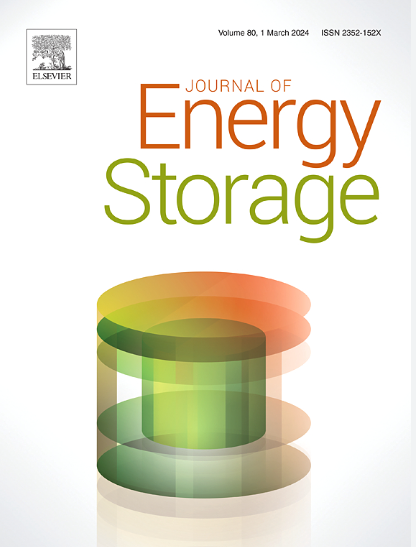Liquid air energy storage (LAES) integrated into the hydrogen economy – Techno-economic optimization of waste cold recovery from liquid hydrogen regasification
IF 8.9
2区 工程技术
Q1 ENERGY & FUELS
引用次数: 0
Abstract
A liquid air energy storage (LAES) system is a promising Carnot battery configuration capable of efficiently recovering waste heat and cold energy carriers. Among these, liquid hydrogen (LH₂) regasification presents a significant opportunity due to its high exergy content and its regasification temperature, which aligns well with the liquid air liquefaction process. While most existing studies focus on integrating LAES with liquid natural gas (LNG) regasification or improving hydrogen liquefaction via liquid air regasification, this work takes a novel approach by enhancing liquid air liquefaction through the utilization of waste cold from LH₂ regasification. Additionally, this study explores an economic innovation, the valorization of clean dry air discharged by LAES, which has not been extensively examined in prior literature. A novel LAES configuration is proposed and subjected to a techno-economic analysis, comparing its performance with a stand-alone LAES system. Results show that the proposed integration increases round-trip efficiency by 15 %, reduces the levelized cost of storage by 60 %, and achieves a payback period of under 10 years. These findings provide valuable insights for both academia and industry, advancing the development of more efficient and economically viable LAES systems.

融入氢经济的液态空气储能技术——液态氢再气化废冷回收的技术经济优化
液体空气储能(LAES)系统是一种有前途的卡诺电池配置,能够有效地回收废热和冷能载体。其中,液氢(LH₂)再气化由于其高能量含量和再气化温度,与液态空气液化过程非常吻合,因此提供了重要的机会。现有的研究大多集中在将LAES与液化天然气(LNG)再气化相结合或通过液化空气再气化改善氢气液化,而本研究采用了一种新颖的方法,通过利用LH 2再气化产生的废冷来增强液化空气。此外,本研究探讨了一项经济创新,即LAES排放的清洁干燥空气的价值,这在以前的文献中没有得到广泛的研究。提出了一种新的LAES结构,并进行了技术经济分析,将其与独立LAES系统的性能进行了比较。结果表明,所提出的集成提高了15%的往返效率,降低了60%的平准化存储成本,并实现了10年以下的投资回收期。这些发现为学术界和工业界提供了有价值的见解,促进了更有效和经济上可行的LAES系统的发展。
本文章由计算机程序翻译,如有差异,请以英文原文为准。
求助全文
约1分钟内获得全文
求助全文
来源期刊

Journal of energy storage
Energy-Renewable Energy, Sustainability and the Environment
CiteScore
11.80
自引率
24.50%
发文量
2262
审稿时长
69 days
期刊介绍:
Journal of energy storage focusses on all aspects of energy storage, in particular systems integration, electric grid integration, modelling and analysis, novel energy storage technologies, sizing and management strategies, business models for operation of storage systems and energy storage developments worldwide.
 求助内容:
求助内容: 应助结果提醒方式:
应助结果提醒方式:


